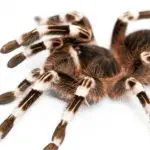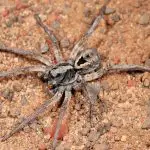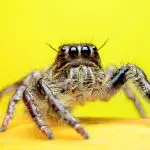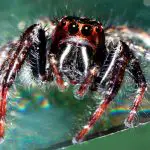Last updated on February 1st, 2023 at 10:05 am
Though it may not exactly be tropical, the UK does have a handful of fascinating arachnids. Let’s find out more about some rare UK spiders…
If you are a lover of spiders – and happen to be in the UK – you will be delighted to know that you can find some at your local nature reserve. In this article, you will learn all about the Great Fox-Spider, the Horrid ground weaver Nothophantes horridus, the Purse web spider and Rosser’s Sac spider. You will also learn about their habits and habitats. After reading this article, you will be better prepared to find these elusive creatures.
The Great Fox Spider (Alopecosa fabrilis)
A very rare UK spider, the Great Fox-Spider is known for its distinctive hunting style. During the night, this spider pouces on its prey, injecting venom into its abdomen, liquefying the internal organs of the insect.
It is only found in three UK sites but has been found in larger populations in continental Europe. In the UK, it is clinging to the edge of its natural range, and has benefitted from protected Ministry of Defence land as a safe refuge.
The Great Fox-Spider is largely nocturnal, ground dwelling creatures that live in forests. This makes it very difficult to find.
Mike Waite, an arachnologist at Surrey Wildlife Trust, spent countless hours searching for this spider by torchlight. After two years of searching for the elusive spider, he finally found an individual. He found several unidentified spiderlings, and finally a female measuring 55mm in diameter.
This sustained effort effectively re-discovered the species in tehe UK.
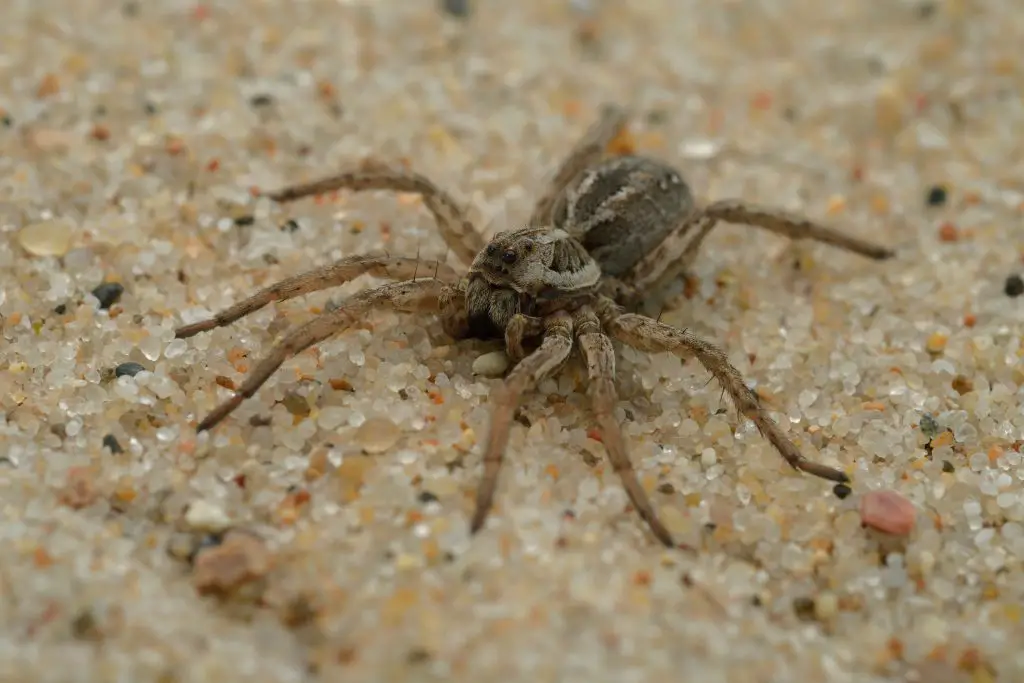
Horrid Ground Weaver (Nothophantes horridus)
One of the most elusive spiders in the UK, the Horrid Ground Weaver has now been captured on film, confirming the existence of two new colonies.
The species lives in limestone cracks, and is most often nocturnal. Its prey is likely to be springtails or other small insects. The latest colonies were found near Plymouth, in the county of Devon, southern England.
The genus Nothophantes horridus is very difficult to spot, as the spider is small and only a few millimetres long. It only comes out during the night, but it is not difficult to identify, owing to its bristly body.
A charity called Buglife is now working with landowners in the Catedown area of Plymouth to protect the genus.
Purse Web Spider (Atypus affinis)
The rare Purse Web spider is a distant cousin of the tarantula. It lives underground and spins silk tubes to catch its prey. The spider then drags the prey inside the silk tube.
These unusual silk tubes help the spider to hide in dark, damp places. The female purse web spider rarely leaves her home. The male, however, will leave its home and travel for breeding. Overall, its way of life is similar to that of a trapdoor spider, to which it is closely related.
The Purse web spider is a unique species among British arachnids. It belongs to the infraorder Mygalomorphae, which makes it the only relative of trapdoor spiders and tarantulas to live in the British Isles.
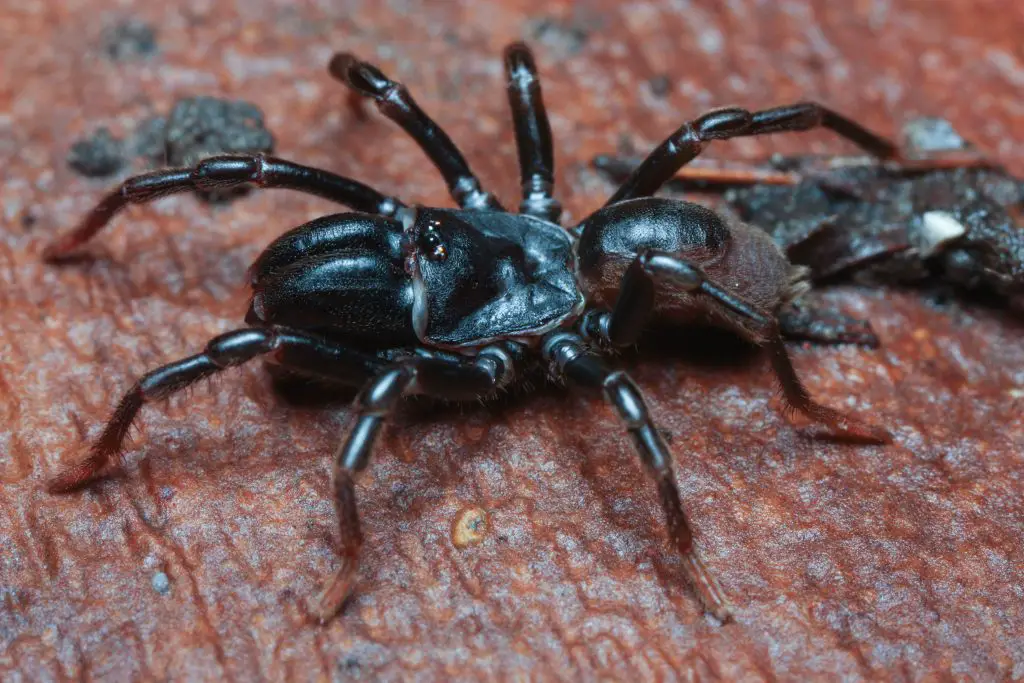
Rosser’s Sac Spider (Clubiona rosserae)
The Rare Rosser’s Sac Spider UK is back! The sac spider was thought to be extinct in the UK until recently. It was last seen at Lakenheath Fen in Suffolk.
The species is listed as a Priority Species in the UK Biodiversity Action Plan, and is under threat across East Anglia where it lives. Conservationists are working to save this amazing species from extinction by improving management of fenland habitats.
The rare Rosser’s sac spider is a member of the clubionid family. It lives in a tubular silk retreat, hidden inside a folded leaf. It is one of the most unusual spiders in the UK. It is believed to hunt for prey without using its web.
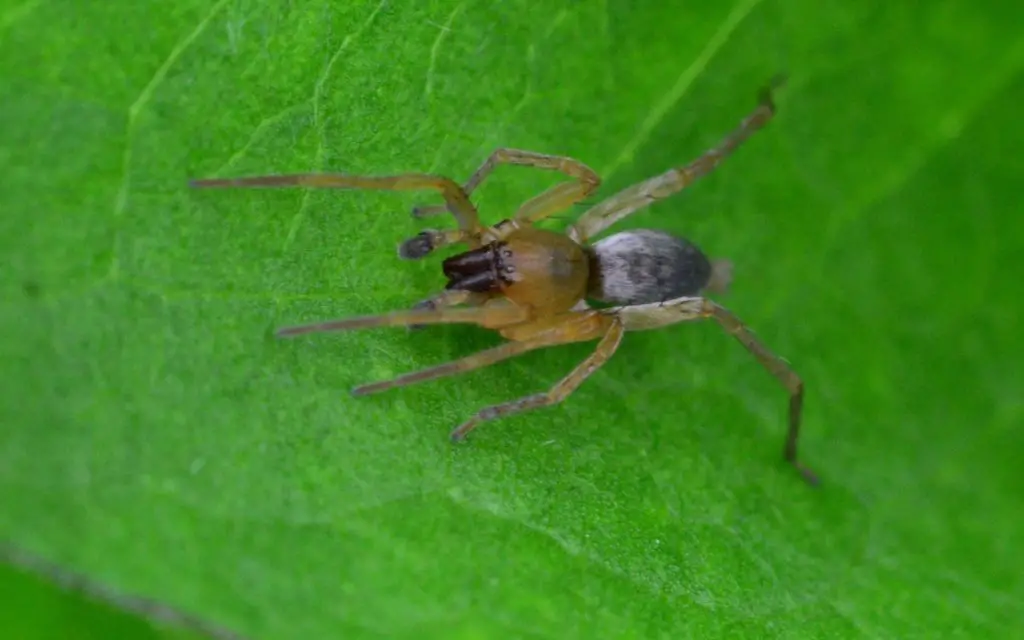
What is the UK’s biggest spider?
There are a number of mid-sized species of spiders native to the UK, including the Cardinal Spider, which can grow to over twelve centimetres in leg length. There are also larger species of Giant house spider, Cellar spider and Labyrinth spider. While most spiders in the UK are harmless, arachnophobia is widespread and seventy percent of people are at least mildly scared of them.
The largest spider in the UK is generally considered to be the Giant House Spider. This species measures up to 12cm, but rarely bites humans. They produce a thin web sheet and feed on insects. Their venom is mild, but the bite can be uncomfortable and itch. In general though, these spiders are incredible docile and reluctant to bite.
You’re most likely to see them when temperatures drop in the autumn and they enter homes looking for warmth.
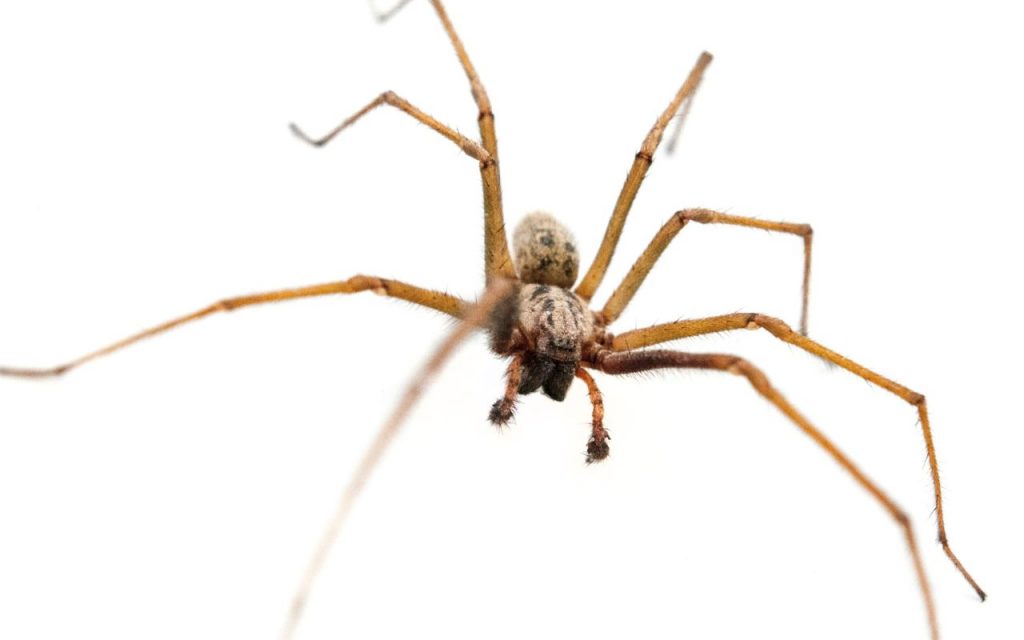
Are there any toxic spiders in the UK?
While there are hundreds of species of venomous spiders in the UK, only a handful have a risk of causing harm. Most spiders’ fangs are capable of puncturing human skin, but few species in the UK have enough venom, or strong enough venom, to do much.
Despite this, some species are fairly toxic, and caution is advised with any unidentified spider.
In the UK, there are more than 650 different species of spiders, but only 14 species of them are toxic to humans. The most toxic spider species in the UK is the invasive brown recluse spider, which can cause severe allergic reactions and even hospitalisation.
The brown recluse spider is small – around 10mm long – and likes to hide in clutter, making it easier for it to accidentally come into contact with humans. It is considered a potentially dangerous spider to come into contact with, although how widespread it is in the UK is still unclear.
In fact, some people consider it to be one of the most medically significant spiders in the world. Interestingly, it’s African relative, the Six-eyed Sand Spider, may have one of the most powerful venoms of any living arachnid.
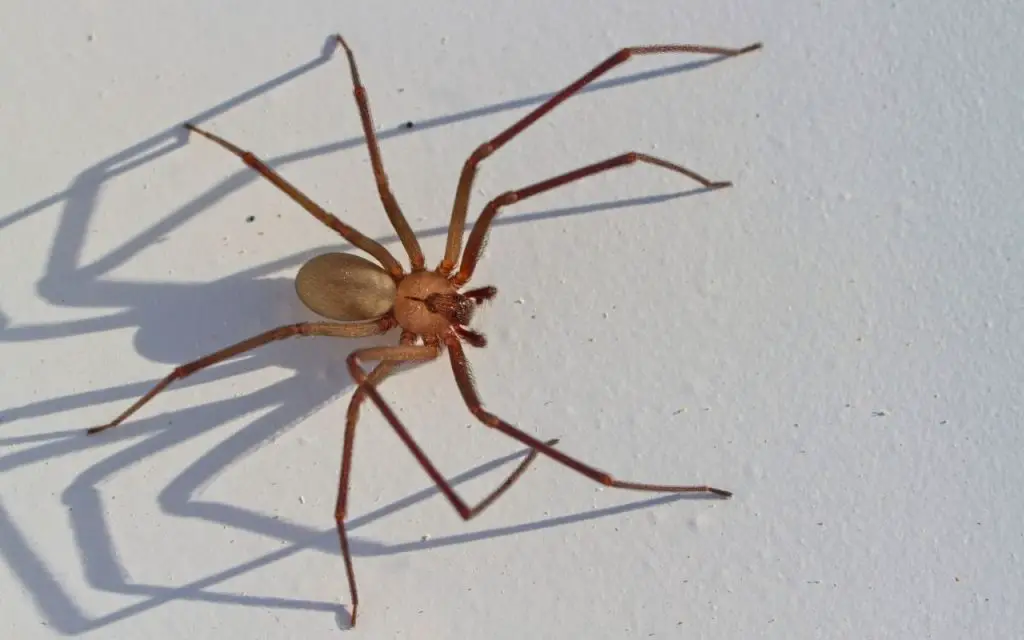
Are Hobo Spiders in UK?
Do you live in the UK? If so, you might have wondered whether or not you can spot the Hobo spider. Its range is largely in England and Wales. Scotland has seen a recent increase in this species, with reports of sightings at Brownfield sites in Bo’ness and Larbert, Falkirk. These spiders are native to Europe, but have spread as far away as North America.
While most people associate the Hobo spider with dangerous bites, it is actually a shy creature. Females spend most of their lives in their webs, while males wander about in search of a female or better nesting site.
They may come into contact with humans through clothing and shoes, and bite out of defense. Although the bite is not life-threatening, it may result in an ulcerated wound and possibly even skin death.


